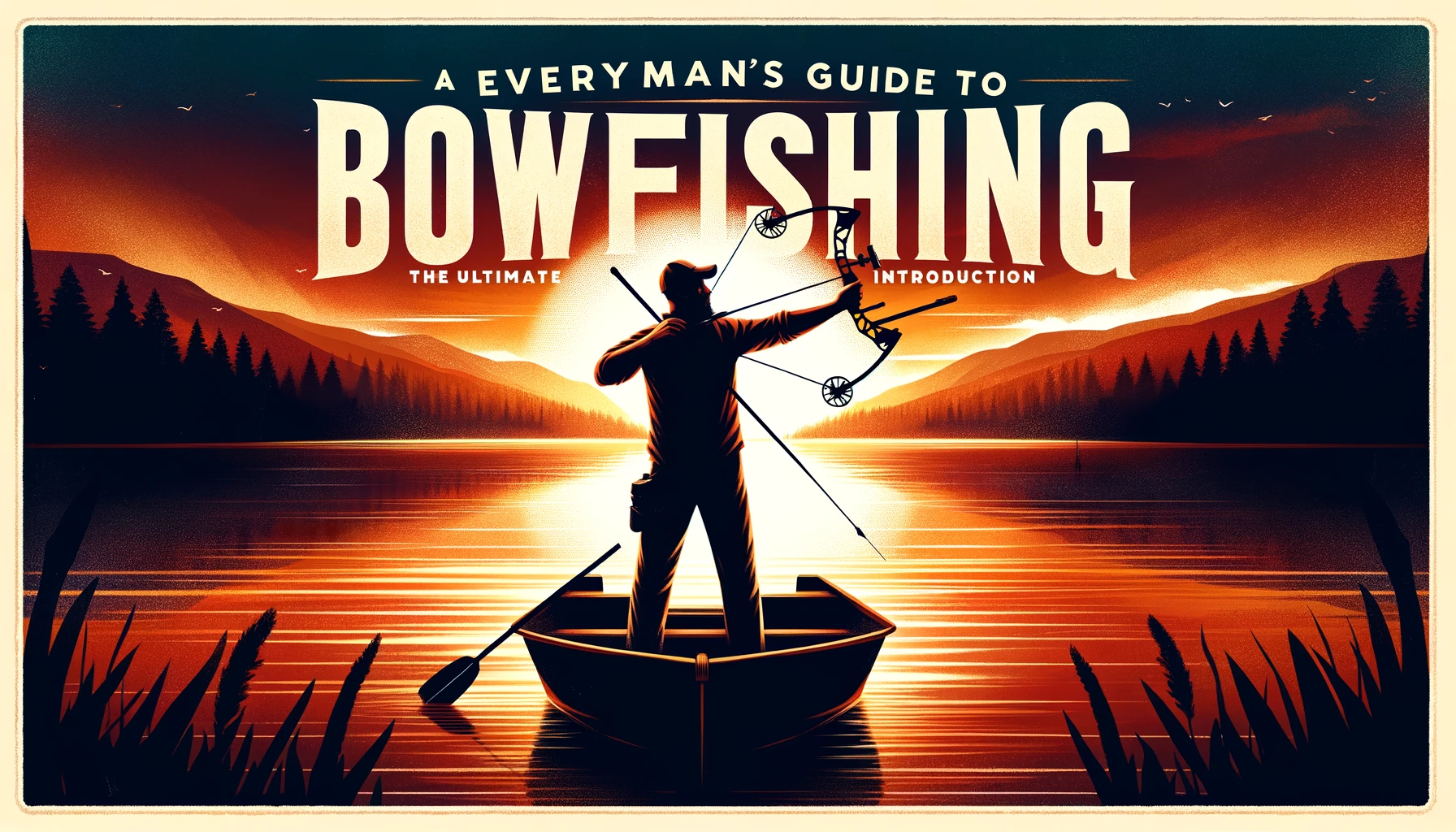Everyman’s Guide to Bowfishing: The Ultimate Introduction


Bowfishing combines the thrill of hunting with the serene beauty of fishing, creating an adrenaline-pumping activity that’s accessible to all. Whether you’re a seasoned hunter, an avid fisherman, or a complete novice, this guide will walk you through everything you need to know to get started with bowfishing. From the basics of equipment and techniques to advanced strategies and conservation ethics, we’ve got you covered.
Table of Contents
Introduction to Bowfishing
Bowfishing is a unique sport that allows anglers to hunt fish using specialized archery equipment. Unlike traditional fishing, bowfishing doesn’t rely on baiting and waiting; it’s all about stalking and shooting fish with a bow and arrow. This dynamic method offers a hands-on, immersive experience in nature’s waterscapes.
Why Try Bowfishing?
- Adventure and Excitement: Experience the thrill of the hunt in a new and challenging way.
- Conservation: Aid in controlling invasive species, contributing to ecological balance.
- Accessibility: Enjoy a year-round sport that’s inclusive, requiring minimal start-up costs and accessible locations.
Getting Started with Bowfishing
Before diving into the waters, understanding the essentials of bowfishing gear and techniques is crucial.
Essential Equipment
- Bow: Learn about the types of bows used in bowfishing, including traditional, recurve, and compound bows.
- Arrows and Points: Discover the best arrows for penetrating and retrieving fish.
- Reels: Explore the different reel systems, such as hand-wrap, spin-cast, and retriever reels.
- Boat and Accessories: Understand the importance of a flat-bottom boat and essential gear for night bowfishing.
Finding Your Fishing Grounds
- Habitats: Identify the best habitats for bowfishing, including rivers, lakes, and coastal areas.
- Fish Species: Get to know the most common fish targeted in bowfishing, like carp, gar, and catfish.
Bowfishing Techniques
Mastering bowfishing requires practice and understanding of key techniques.
Stance and Shooting
- Aiming and Shooting: Learn the art of aiming below the water’s surface to account for light refraction.
- Bow Handling: Tips for handling and maintaining your bow in various weather conditions.
Safety and Ethics
- Safety First: Essential safety tips for handling bows and arrows.
- Ethical Considerations: Understanding the importance of sustainable and ethical bowfishing practices.
Advanced Strategies for Success
Elevate your bowfishing skills with advanced tactics and strategies.
Night Bowfishing
- Equipment and Lighting: The essentials for a successful night bowfishing trip.
- Techniques and Tips: How to adapt your strategy for night fishing.
Bowfishing in Different Seasons
- Seasonal Strategies: Adjusting your approach based on fish behavior and habitat changes throughout the year.
Conservation and Community
Bowfishing is more than just a sport; it’s a way to connect with the environment and community.
Role in Conservation
- Impact on Invasive Species: How bowfishing helps control non-native fish populations.
- Promoting Healthy Ecosystems: The importance of responsible bowfishing in maintaining biodiversity.
Joining the Bowfishing Community
- Clubs and Organizations: Discover how joining a community can enhance your bowfishing experience.
- Tournaments and Events: Learn about participating in competitive bowfishing.
Conclusion
Bowfishing offers an exciting, hands-on approach to fishing that combines the precision of archery with the challenge of fishing. It’s an accessible sport that welcomes participants of all skill levels to enjoy the great outdoors while contributing to conservation efforts. With the right equipment, knowledge, and respect for the environment, anyone can embark on a bowfishing adventure.
Frequently Asked Questions
1. What is the best time of day to go bowfishing?
Answer: The best time for bowfishing varies depending on the species you’re targeting, but many bowfishers prefer either early morning or late evening into the night. These times offer lower light conditions, which can make it easier to see and stalk fish. Night bowfishing is also popular, as many fish are more active and visible due to the use of bow-mounted lights.
2. Do I need a special license for bowfishing?
Answer: Yes, in most cases, you will need a fishing license to bowfish, but the specific requirements can vary depending on the jurisdiction and the type of water body (freshwater vs. saltwater). Always check with your local wildlife agency or conservation department to ensure you have the necessary permits or licenses.
3. What are the most common species targeted in bowfishing?
Answer: The most commonly targeted species in freshwater bowfishing include carp, gar, catfish, and buffalo fish. In saltwater environments, bowfishers often target stingrays and various shark species. The specific species available can vary significantly depending on your location and the habitat.
4. Is bowfishing considered ethical and sustainable?
Answer: Bowfishing, when practiced responsibly, is considered both ethical and sustainable. It can play a crucial role in controlling invasive species and managing fish populations in certain ecosystems. Ethical bowfishing involves following all local regulations, targeting invasive or overpopulated species, and avoiding wasteful practices by utilizing the catch or practicing catch and release where applicable.
You can also visit : The shooting gears







